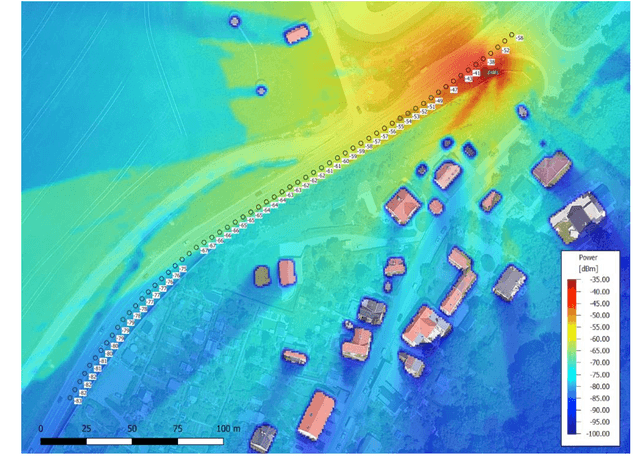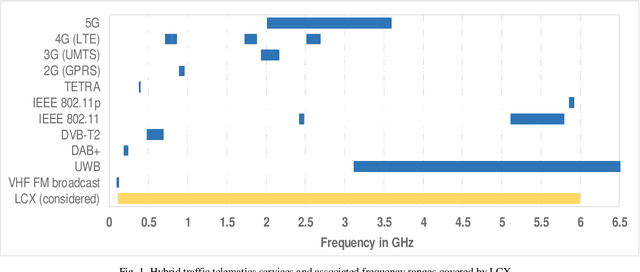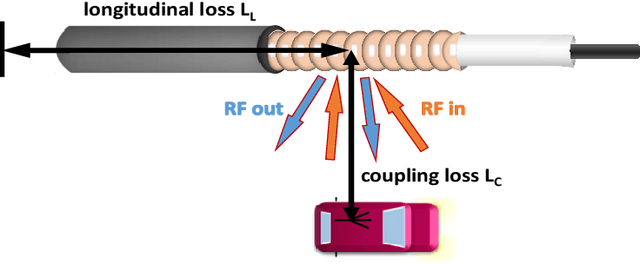Christian Setzefand
Efficient coverage planning for full-area C-ITS communications based on radio propagation simulation and measurement tools
Feb 07, 2022



Abstract:Intelligent infrastructure, currently often consisting of C-ITS stations and prospectively supplemented by 5G, is a key-enabler for application-oriented and area-wide realization of highly automated and connected driving. For this, radio coverage along the routes must be ensured, leading to high demands on location- and radio-specific planning and parameterization of roadside units (RSU). Hence, this paper presents efficient planning, measurement and evaluation methods for RSU coverage outlining, allowing economically efficient and technically secured planning of intelligent infrastructure. Necessary scientific technical steps are showcased along a 3.5 km testbed for automated and connected driving in rural environments. First, a radio propagation simulation based on a 3D environment model and its electro-magnetic properties is performed, allowing the examination and optimization of RSU quantity as well as site and antenna selection. Additionally, the necessary calibration of simulation results based on continuous wave (CW) and C-ITS service measurements in both lab-based and real-world scenarios is presented.
An empirical study on V2X radio coverage using leaky coaxial cables in road crash barriers
Dec 08, 2021



Abstract:For current and future automated driving functions, the radio availability of broadband hybrid networking services (e.g. digital broadcasting, mobile radio, dedicated short range communication) is a prerequisite for continuous V2X information exchange. The supply focus for this is explicitly the road route with its lanes. The application of antenna-based solutions for such longitudinal radio cells with hybrid telematics services is expensive from the installation point of view and can only be adapted to new future telematics standards with great effort. A more suitable solution for such longitudinally shaped radio cells for road routes are leaky coaxial cables (LCX), which are already successfully used for tunnel solutions, for example. The paper discusses the installation and radio implementation of broadband LCX solutions (up to 6 GHz) in terms of simulation and surveying. The integration of the LCX into the crash barrier is favored due to low installation effort and easy upgradeability. An installation was realized on an automotive test fields, where preliminary empirical results for radio simulation and coverage were obtained. Based on the simulations and evaluation measurements, it can be shown that the propagated coverage approach is sustainable over all radiated services. Further solution approaches such as the direct insertion of LCX into the roadway and the derivation of vehicle location information are discussed in the outlook of the paper.
 Add to Chrome
Add to Chrome Add to Firefox
Add to Firefox Add to Edge
Add to Edge